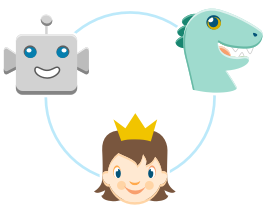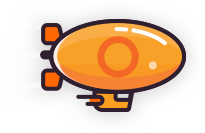Full Text
Hey, you’re a scientist, like me! Come discover with Sid the Science Kid.
“Sid! Woah! It’s time for breakfast!”
“Ahh, I’m so hungry, Mom! I’m gonna have my favorite cereal—the kind with honey. I love honey!”
“Yep, you’re right! Honey is so good!”
“Hey, Mom and Dad! Did you ever notice that the honey cereal box has pictures of bees on it? That’s funny! I wonder why they’re on there?”
“I know why, Sid. Because the cereal has honey.”
“And do you know where that honey comes from? We get it from our friends the bees. It’s the bees that make honey!”
“This sounds like something I need to investigate!”
“And don’t forget to take your magnifying glass so that you can observe the bees!”
“Bees! Where are you?”
“Where there are flowers, there are bees!”
Oh, well maybe these flowers over here—There’s a bee!
It looks like it’s sucking on the flower!
“Yep. You got it, Sid. That is called ‘gathering nectar.’”
“Hey, bee, come back! Don’t fly away!”
“Oh, there it is!”
“Oh! It’s landing on another flower!”
“It’s gathering sweet juice from the flower.”
“Ah, that’s incredible! Then the bees use that sweet juice to make honey for my cereal. Right, Dad?”
“Yeah, and that juice is nectar.”
“Bye!”
“Well, where’s the bee going now?”
“Home. That’s its beehive.”
“And that’s where the bees keep all the nectar that they’ve gathered.”
“That’s right! You got it, Siddo. Bzzzzz!
The bees are making the nectar into honey. They make the honey to feed all the bees in the hive during winter, and to feed breakfast to you, Sid!”
“I’m gonna go tell my friends!”
“Hi, scientists! I hear you made an interesting discovery today, Sid.”
“This morning I learned that honey’s made by bees!”
“Yay for bees!”
“To do it, they use nectar. And nectar is the sweet juice they gather from inside flowers.”
“That’s true, Sid. But bees also do something else that’s very useful for nature.
To make seeds, a flower needs pollen.”
“Oh, what’s pollen?”
“Pollen is a powder the flower has inside. Sometimes the wind can blow the pollen from one flower to another, but that doesn’t always work out very well.”
“’Cause the wind just blows everywhere?”
“Exactly. So the bees are much better at bringing pollen from one flower to another.
When they gather nectar, pollen sticks to their back legs.”
“Ooooh!”
“And when they fly away, that pollen will stick to the next flower that they land on.”
“Wait, Teacher Susie, does that mean if there weren’t any more bees, then there wouldn’t be any flowers in our garden?”
“Well, if there weren’t as many bees, there would be fewer flowers and less fruit!”
“From now on, I’m going to say thank you whenever I see a bee outside.”
“Let’s celebrate by having some toast with honey!”
“Yay!”
“Let’s go!”
“Flowers and bees work great together!”
“Yeah!”
Now I know why bees and flowers get along so well. It’s the pollen! Right, flowers? Ahh.
Flowers give nectar to the bees, and the bees carry pollen to other flowers so that more flowers can grow and they can give us more yummy fruit.
Next time you see a pretty flower, thank our friends the bees.
See you later, scientists!
Mm. Ahh!





























